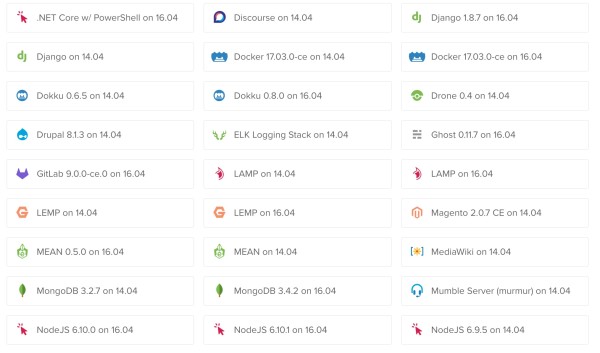When I began my web journey, oh so long ago (it was 2009), I was somewhat naive. At the time, I was looking for a solid performance, a provider that seemed competent and professional, and made it easy for someone who knows just enough to be dangerous.
Shared Hosting
At the time, shared hosting was the rage, and there were several options, even then. I settled on MediaTemple as a provider, and I was happy. They made no promises about “unlimited” things like disk space and bandwidth, and the few times I needed support, they were great. They weren’t cheap, ad $20 a month, but they worked.
Still, there were limitations to shared hosting. Like the time that someone in our MySQL cluster brought our node down with some really bad code. The down times were quite limited, but I felt out of control, so knowing enough linux system administration, I wanted to move to a VPS or virtual private server.
This became urgent the morning I woke up to an email that MediaTemple had been bought by GoDaddy. No matter how great MT had been, I had bad experiences with GoDaddy, having used their hosting service to run a website for Southern Arizona Greyhound Adoption, and while it worked, it wasn’t a great experience.
VPS and cPanel
My first VPS, after a quick search was at A Small Orange, and I was happy there for about 15 months. Yes, there were a couple of down times, but in general, the performance was fabulous, I had a dedicated VM, with SSD backed storage, and I liked it.
The ASO VPS came with an environment that is common in the hosting world, cPanel, a simplified web interface to allow you to manage all the aspects. Think of it like the “Fisher Price” computer control, hiding all the complicated “tricky” bits, and making it a no brainer for someone who is not Linux savvy. But is has a downside, it is pretty resource intensive, and it really turns your sleek Linux virtual machine into a little hosting provider. You can sublet, resell capabilities, and partition your VPS to accommodate several clients all separated from each other. A bit overkill for my purposes, but it worked well.
Fast forward to the 15 month mark (and 3 months into my second paid year of it) and they had a huge failure in their datacenter. Most of their shared hosting was either not affected, or minimally impacted, but their large population of VPS customers, their bread and butter, spending at least $30 a month (versus ~ $5 a month for shard hosting) got boned. My downtime was 9 days, with it mostly coming back online after 7 days, but being about as reliable as a candle in a hurricane.
Needless to say, I looked to jump ship. I learnt that most of the well known names in hosting were owned by a giant private equity firm, and where once the individual services had great performance and support, upon being subsumed into the sprawling beast, they lost their mojo. Looking for a safe harbor, a blog I was running on the Ghost hosted platform gave me a glimpse. A company called Digital Ocean was making a splash, and the Ghost team moved from their dedicated servers to an infrastructure hosted on Digital Ocean. The founder of Ghost made a compelling case, so I jumped to them as soon as I was able to get access to my data on A Small Orange.
Droplets
Unlike the VPS packages offered by the main hosting providers (GoDaddy, Hostgator, Dreamhost, et al) where you got a dedicated Linux VM, a cPanel interface, and the ability to run whatever you could support, Digital Ocean offered their VPS as “Droplets”. You could buy a minimal size VPS, which is 512M memory, 20G of SSD storage, and a single virtual CPU, plenty to run a WordPress site or two, all the way up to 32 CPU’s and 224G RAM.
There are a variety of OS’s you can choose, from ubuntu to CentOS (all Linux, plus one FreeBSD distribution) and select which geographic datacenter you want (San Francisco, New York, and several global sites too), and you push a button and it is set up.
Of course, if you know that you are going to just run a simple WordPress blog, they have a “one button” application setup (similar to the shared hosting providers), to make it super easy for the less skilled in the art of Linux setup and configuration. This is important, as it makes it much less scary for an intermediate user. It isn’t as boneheaded simple as the shared hosting, designed as a fenced in arena, to prevent the customers from messing things up (and more importantly to be easier to support), but it can remove some of the scare factor from the process.
What I initially liked about the Droplet concept was that it was simple and clean. You had a Linux virtual machine, you had complete control (to the point of screwing it up), but there were niceties that improved your life. Single button installs of Workpress (or drupal, magneto, and many others) make getting started easy.

The concept of Droplets “clicked” with me, and I created a few. One I used ServerPilot to host multiple WordPress sites on. ServerPilot deserves a post on its own, but simply put, it is an automation system that you point at a bare VPS (aka “Droplet”) and it does its magic. It makes it bone head simple to host multiple domains and wordpress (or any LAMP type application, but it has a 1 click install of WordPress).
Downsides to VPS
There are a couple of notable downsides to running a VPS. No longer can you assume that your hosting provider will manage the updates and security patches of your install. This is a serious downside, as you will need to log in via SSH fairly frequently, and check for/install recommended updates.
Additionally, when it is time to upgrade major releases in the distribution, you are on your own. You get to verify that there aren’t conflicts and incompatibilities, that may trip you up. When I upgraded from Ubuntu 14.04 LTS to 16.04 LTS, shit broke, and I had to roll back, figuring out what I needed to fix. Fortunately, it is stupid easy to roll back on Digital Ocean, so apart from time lost, I had no unrecoverable issues. (I did figure it out and upgrade successfully)
But that is the list of negatives that I have experienced.
Summary
My history, starting on WordPress.com, then to shared resource hosting, then a cPanel VPS, and finally to Digital Ocean “Droplets” has been interesting, a true “growth” experience for me.
As I mentioned at the top of this post, I know enough to be dangerous, and I certainly don’t make a living at this, being merely a hobby, but I find that the service at Digital Ocean is a good fit for me. Their support has been excellent, and their pricing is fair.
They have an extensive knowledge base of articles, so that if you want to get out of your comfort zone, you can do so, with well scripted steps to success.
This blog is hosted on a second from cheapest Droplet (1GB memory, 30 GB HD, Ubuntu 16.04LTS), managed via Serverpilot, and hosting 5 different wordpress blogs and 5 different domain addresses.
Future posts
A few weeks ago, I spent a day playing with AWS, and setting up a simple WordPress blog, as a comparison to Digital Ocean, and it was an enlightening experience (I was successful, but it was a lot more complex than even starting with a Droplet.) I will do a comparison to setting up a simple WordPress installation on Digital Ocean.
Serverpilot is a remarkable automation tool, that even in its “free” guise, is quite useful, minimizing the complexity, and headache for the administration of the VPS. In many ways it is a far more useful cPanel replacement. I will do a much more thorough review of a newbie’s perspective.
Cloudflare, seeing a couple of my domains get DDOS’d and overwhelmed with hacking attempts (not successful), I have turned to the free Cloudflare service level to reduce this risk. There are a couple of complications in accessing your VPS, and I will describe my solutions to it.
More depth on the Digital Ocean Knowledge Base. You can greatly educate yourself to a large degree by following their tutorials. From basic server setup, how to secure a server, how to access via SSH with public keys, to basic firewall configuration, and much much more. For $5 a month, for a single droplet, and the KB, you can become a pretty proficient Linux administrator on the cheap while doing real work.
